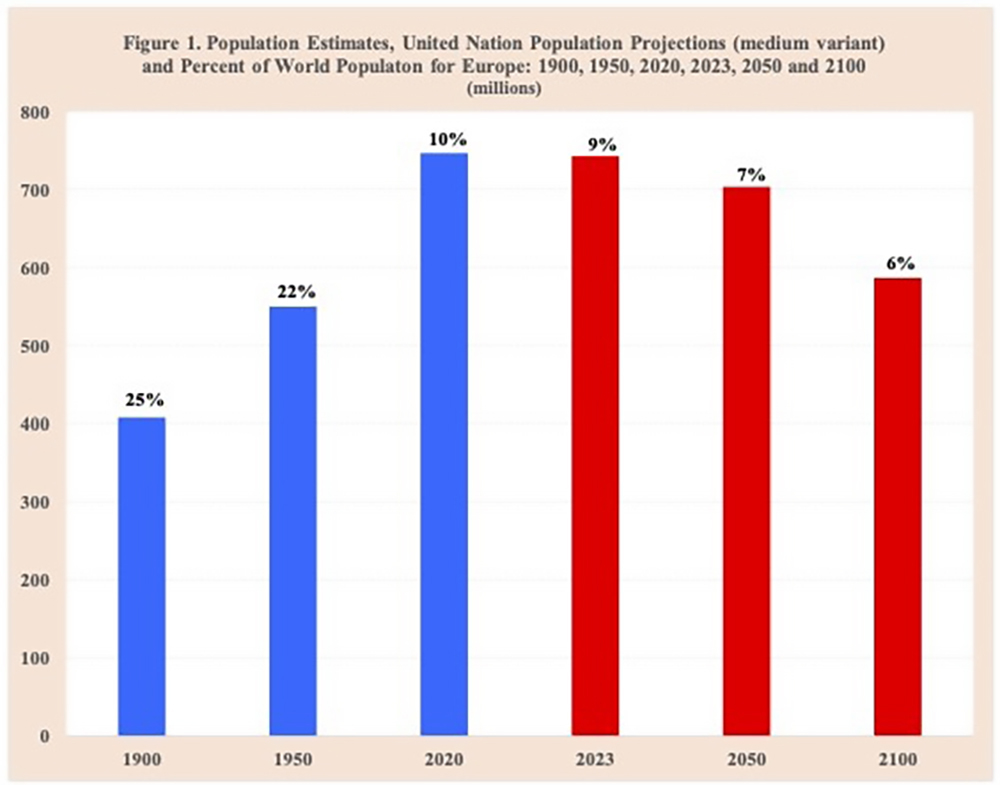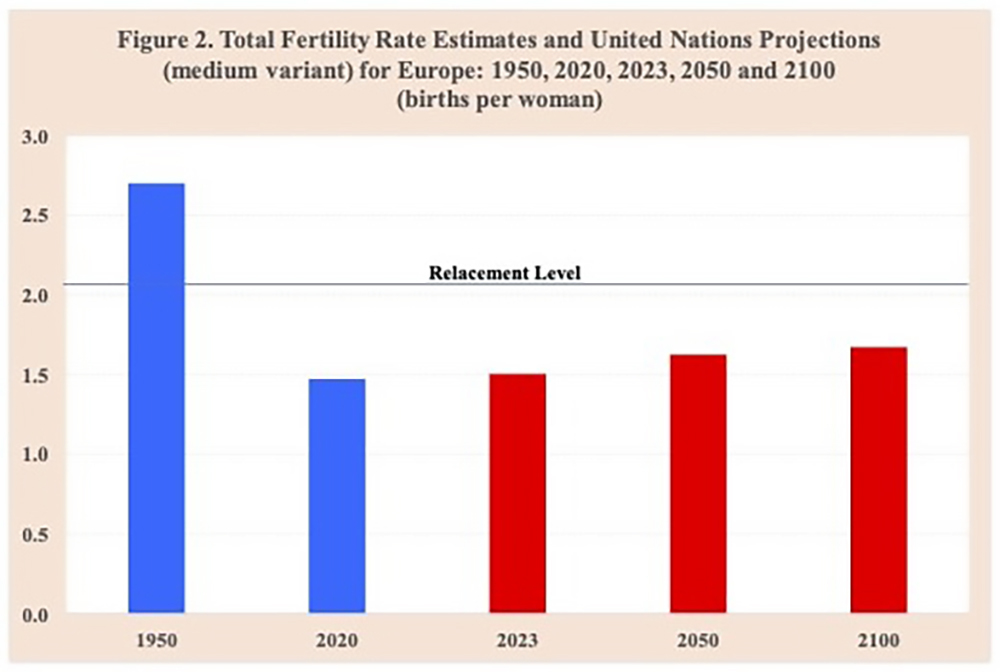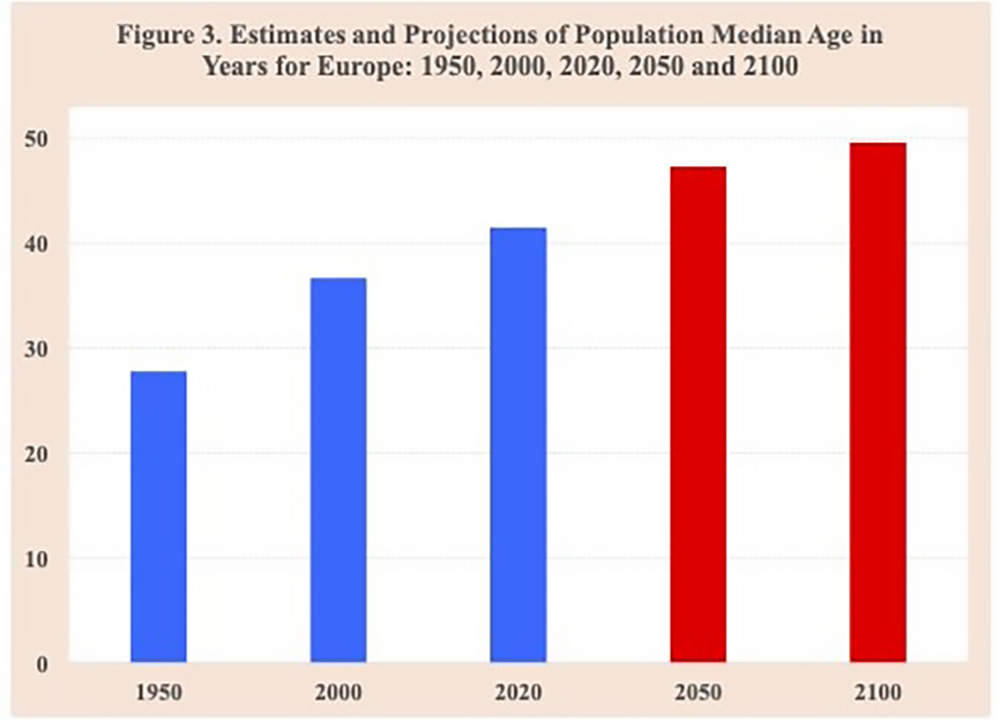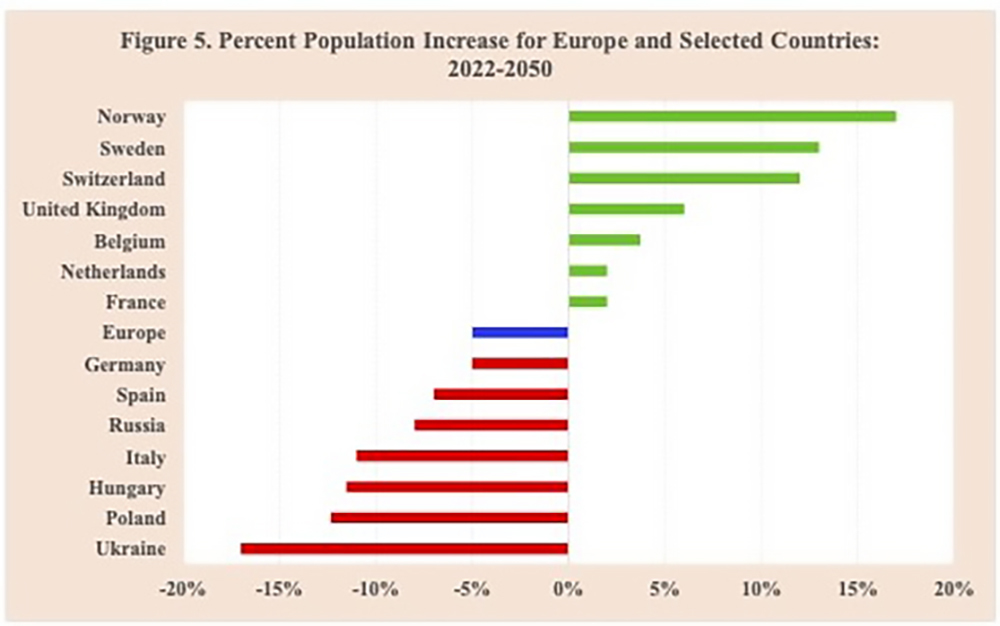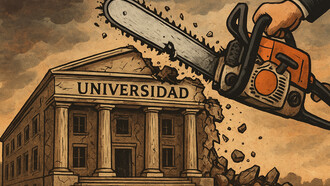Europe’s population in the 21st century can be summarized as declining, ageing and diversifying. Those three profound demographic changes pose enormous social, economic, political, and ethical challenges for Europe.
The declining, ageing and diversifying of Europe’s population that is rapidly evolving in the 21st century is based on the continent’s past levels of fertility, mortality, and migration, more recent trends, and the expected likely demographic trends over the coming eight decades.
With an estimated population in 1900 of approximately 408 million, Europe’s population grew to 550 million by 1950. Over the subsequent seven decades, Europe’s population continue to increase at a relatively rapid pace, peaking at about 746 million in 2020.
Europe’s share of the world’s total population, however, fell slightly during the first half of the 20th century, from 25 percent in 1900 to 22 percent in 1950. Over the subsequent decades, Europe’s share declined substantially, falling to about 10 percent of world population by 2020.
The United Nations population projection (medium variant) expects Europe’s current estimated population of 742 million to continue declining. By 2050 Europe’s population is projected to fall to 703 million and by the close of the 21st century to be 587 million, or approximately 7 and 6 percent of the world’s population, respectively (Figure 1).
Those projections of population decline during the 21st century assume that Europe’s fertility rate will continue to remain well below the replacement level of about two births per woman. And that low level has been the case for Europe’s fertility rate over the past fifty years.
From a high of about 2.7 births per woman in 1950, Europe’s total fertility rate fell below the replacement level by the mid-1970s. The rate continued to decline to its current level of approximately 1.5 births per woman, with virtually all European countries experiencing below-replacement fertility.
Over the coming decades, the United Nations medium variant projection assumes fertility will improve slightly. At the close of the 21st century, Europe’s fertility rate is expected to reach 1.7 births per woman, still about a half-child below the replacement level (Figure 2).
Of course, Europe’s future fertility rate could differ from the expected medium variant fertility projection. And consequently, a different future fertility trajectory would yield a different future population size for Europe.
The high variant, for example, assumes the fertility rate will increase over the coming decades to near the replacement level of approximately 2.2 births per woman. Accordingly, the high variant fertility results in a projected European population by 2100 of about 830 million, considerably higher than the 587 million projected by the medium variant.
In contrast, the low variant assumes Europe’s current low fertility rate will decrease even further over the coming decades to about 1.2 births per woman. Under that assumption, Europe’s population in 2100 is projected to decline to approximately 400 million. And if the fertility rate were to remain unchanged at its current level of 1.5 births per woman, the size of Europe’s population at the close of the 21st century would be about the same as it was at the middle of the 20th century, i.e., about 540 million.
With respect to Europe’s future levels of mortality, it is assumed that life expectancies will continue to increase throughout the 21st century. Europe’s current average life expectancy at birth of nearly 80 years is projected to reach nearly 84 years by 2050 and approximately 90 years by the close of the 21st century.
In addition to declining in size, the population of Europe is also ageing due to its low fertility levels as well as increasing longevity. The median age of 28 years in 1950 increased to 37 years by 2000 and 42 years by 2020.
The ageing of Europe’s population is expected to continue throughout the remainder of the 21st century. The median age for the continent’s population is projected to reach 47 years by 2050 and 50 years by 2100 (Figure 3).
The elderly proportion of the European population will also continue to increase substantially over the coming decades. Whereas the proportion of the population aged 65 years and older was 8 percent in 1950, by the start of the 21st century it had nearly doubled to 15 percent and has now reached about 20 percent.
The elderly proportion of Europe’s population is projected to continue rising to about 29 percent by mid-century. And by 2100, one-third of Europe’s population will be aged 65 years and older with the proportion approaching 40 percent for some countries, such as Albania, Croatia, Greece, Italy and Spain.
In addition, Europe’s number of centenarians are also rising. Whereas at the start of the 21st century Europe’s centenarian population numbered about 50 thousand, today they are nearly 200 thousand. The number of Europe’s centenarians is expected to continue increasing, reaching 500 by mid-century and well over 2 million before the close of the century.
Europe’s population has also become more diverse ethnically as a result of increasing levels of international migration. The estimated number of foreign-born in Europe, which was about 57 million at the start of the 21st century, has increased to approximately 87 million by 2020.
Nearly 40 percent of the foreign-born in 2020 reside in western European countries, with about 18 percent of the foreign-born in Germany, which is nearly double the proportion in 2000. Other countries with large proportions of Europe’s 2020 foreign-born population include Russia at 13 percent, the United Kingdom at 11 percent, France at 10 percent, Spain at 8 percent, and Italy at 7 percent (Figure 4).
As has been the case during the recent past, the size and proportion of Europe’s foreign-born population are expected to continue rising over the coming decades. With its ageing and declining population, the levels of migration to Europe are likely to be substantially greater than the levels being experienced today, especially with the persistent demands from the private sector calling for more workers at virtually all skill levels.
In addition to relatively high levels of legal migration, the increasing levels of unauthorized migration pose a myriad of mounting challenges for Europe. Notable among those challenges are negative attitudes and hostilities towards immigrants and their families, legal, ethical, and human rights questions regarding unauthorized migrants, and the rising political influence of far-right nationalist parties.
A potent factor fueling the unprecedented high levels of unauthorized migration to Europe is the rapid demographic growth of many developing countries struggling with poverty, political instability, civil strife, and climate change in Africa and Asia. Particularly notable is Africa’s population, which currently contains 33 of the 46 least developed countries in the world. The African population is expected to more than triple during the 21st century, increasing from about 800 million to nearly 4 billion.
Although the overall population of Europe is declining, ageing and diversifying, noteworthy differences exist among the countries on that continent. In general, European nations are ageing, diversifying, and experiencing below-replacement fertility rates, with many expected to experience population decline during the 21st century. However, the populations of some European countries are projected to increase (Figure 5).
The expected percentage declines in the size of their populations between 2022 and mid-century include Germany (-5 percent), Spain (-7 percent), Russia (-8 percent), Italy (-11 percent), Hungary (-12 percent), Poland (-12 percent), and Ukraine (-17 percent). In contrast, the projected percentage increases in the size of their populations over the next thirty years due to relatively high immigration levels include France (2 percent), the Netherlands (2 percent), Belgium (4 percent), the United Kingdom (6 percent), Switzerland (12 percent), Sweden (13 percent), and Norway (17 percent).
In sum, the major demographic features of Europe’s population for the 21st century are declining, ageing and diversifying. Those potent and pervasive demographics are creating formidable challenges for Europe. Rather than hoping for an unrealistic return to the levels of the past, it’s time for the countries of Europe to recognize their changing demographics and address the many challenges arising from them.

